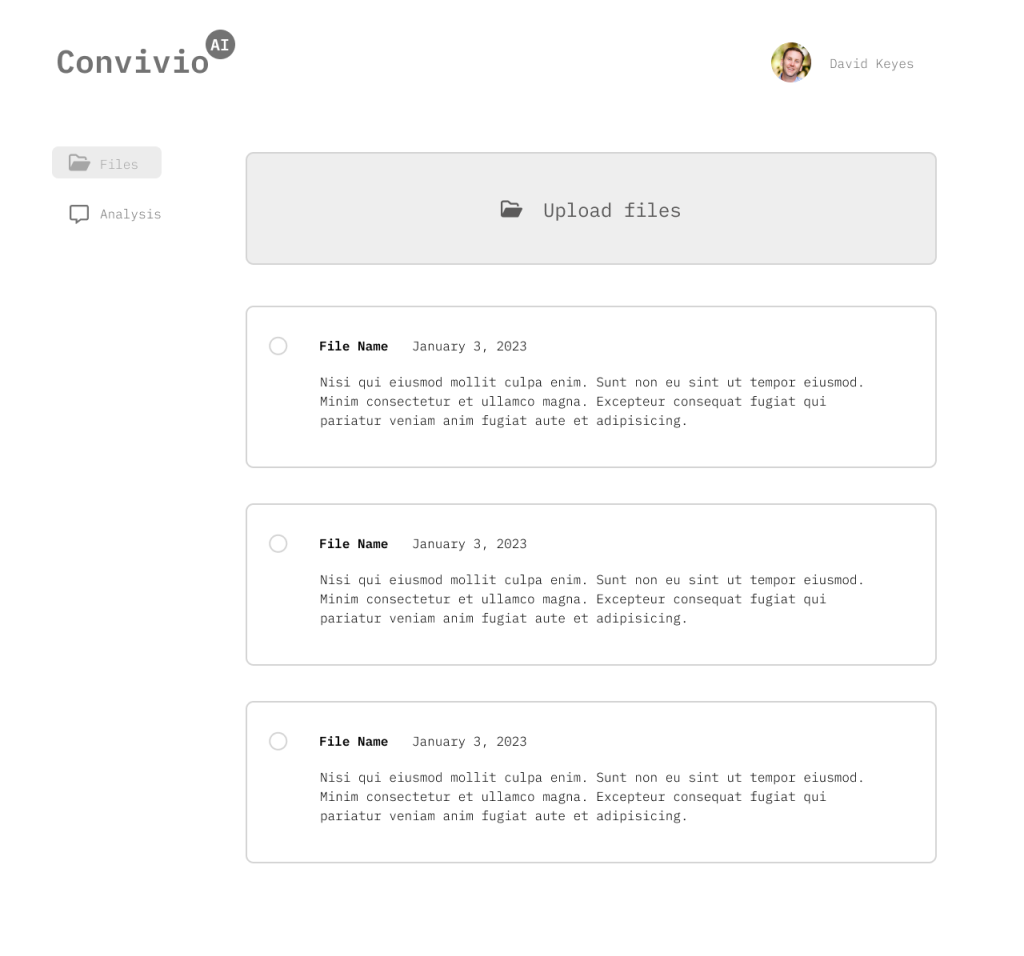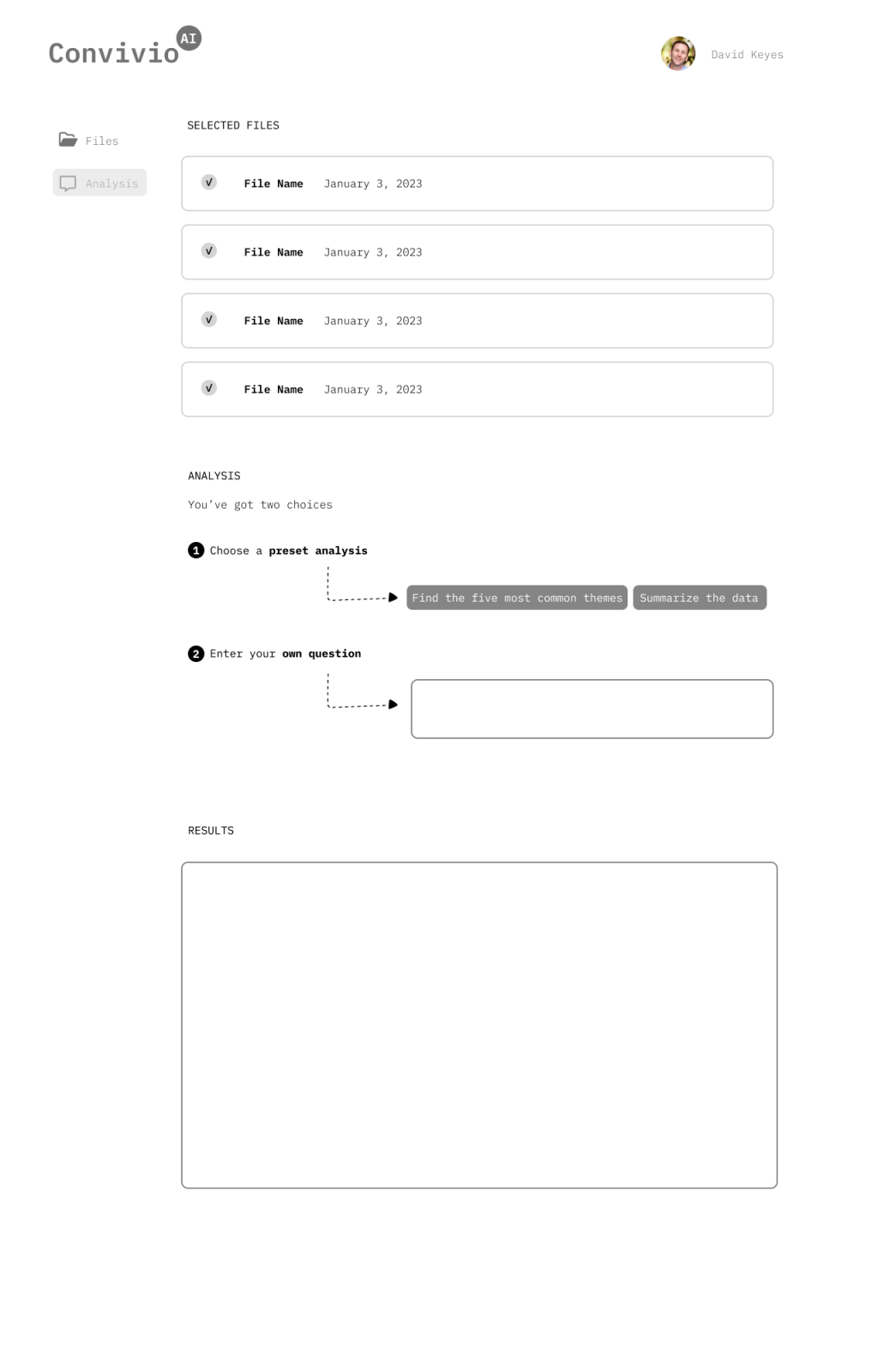The Problem
Analyzing qualitative data is extremely challenging. Qualitative data analysis today tends to occur in three ways, each of which has problems:
Manual analysis using expensive qualitative data analysis (QDA) software. Tools such as NVivo ($499 per year per user), Atlas.ti ($579), and MaxQDA ($395) are expensive. One lower cost option (Depose at $180 per year) exists, but the real cost is in the dozens and dozens of human hours it takes to conduct even simple analysis using this approach.
Informal analysis. Given the cost of QDA tools, many users opt to forgo them altogether. Instead, they simply read the texts they are analyzing, take notes, and identify patterns informally. This approach is unreliable across multiple users (what one person thinks is important, another person may ignore completely) and rife with biases. And while it is not as time-intensive as using formal QDA software, it still requires significant human effort.
Automated qualitative data analysis using code-based approaches. There are tools that can automate analysis, such as the R package tidytext, but they often require coding knowledge. What's more, the questions they can answer don't go far beyond the surface. Things like sentiment analysis (are the people I interviewed, on average, happier or unhappier?) get us started with qualitative data analysis, but have limited explanatory abilities.
Because there is no good solution for qualitative data analysis, in-depth interviews, open-ended survey questions, and similar data tends to be underused. Instead, researchers overemphasize quantitative data, such as closed-response survey questions, satisfaction forms, and the like. While quantitative data is useful for understanding broad patterns, qualitative data allows us to go deep, making sense of the motivations behind people's actions.
The Solution
What if there were a tool that could do the types of analysis done with QDA software, but without the cost and time required? That could get rid of the biases common with informal analysis? And that could automate analysis while also beyond surface-level questions?
That tool is Convivio.
Convivial uses AI technology to allow researchers to automate qualitative data analysis and glean in-depth insights. Employing OpenAI technology, it will use cutting-edge large language models to allow researchers to quickly, easily, and creatively engage with their qualitative data. With a user-friendly interface that requires no coding at all, researchers will be able to summarize qualitative data, identify themes, and more.
Convivio has the potential to improve today's qualitative research. And, perhaps even more important, it can make qualitative research easier, and more commonly used, in the future. With the barriers of cost and time for qualitative data analysis removed, researchers will feel empowered to use more open-ended questions on surveys and to conduct more in-depth interviews. Researchers will feel confident conducting qualitative research, knowing that the process will be as simple as adding their transcripts and asking Convivio to help with the analysis.
The Market
The market for Convivio is huge. Qualitative research happens in all walks of life – though it could happen way more regularly than it does today. From those who identify as researchers (academics as well as those in industry, such as UX researchers) to people in evaluation who typically conduct research to improve non-profit and government programs to all of the places that get informal feedback from users (e.g. a dentist office that wants to make sense of patient feedback data), there are millions of potential Convivio customers.
The Competition
In addition to competition from existing QDA tools, there are several other tools that could serve as competition for Convivio. However, each competitive tool has at least one significant drawback.
The most direct equivalent to Convivio is called Viable. However, its pricing, starting at $600 per month, is out of reach for all but the most well-heeled of researchers.
The rise of AI is leading other tools to enter this space. One is detangle.ai, which claims to simplify and summarize any type of document, audio, or video file. However, by just focusing on one document at a time and by taking a mass market approach of appealing to all users, detangle.ai is unlikely to resonate with researchers.
Another new tool is AskAI. This tool does nearly the exact same thing as envisioned with Convivio. However, its more general focus will make appealing to researchers challenging.
There are also multipurpose tools that are adding AI capabilities. These include Notion, Coda, and more. Again, though, because these tools are not targeted at researchers specifically, they are unlikely to get much uptake as tools for qualitative data analysis.
The Opportunity
The opportunity for Convivio is in giving people easy access to AI tools for qualitative data analysis. While forward-thinking researchers comfortable with technology can, say, use detangle.ai, Notion, Coda, or ChatGPT on their own to conduct qualitative data analysis, for most researchers, the idea of using AI for their work remains abstract.
Given this, Convivio must be a well-designed, easy-to-use tool. A simple interface that guides users to allow them to see the power of AI for qualitative data analysis is key. Despite the simplicity of Convivio's interface, the analysis that underlies it will be incredibly powerful. Making it simple to use yet capable of complex qualitative data analysis has the potential to turn Convivio into a powerful tool for researchers of all stripes.
Roadmap
While the exact roadmap will be determined based on user feedback (and I already have several users interested in pilot testing Convivio), I imagine its broad outlines looking something like this:
Short-term
Goal: Improve analysis of externally created data
Break files (e.g. transcript of an entire interview) into pieces (e.g. by question) for improved analysis
Group files intro projects
Upload Excel/CSV files and have them automatically broken into individual files
Save analyses to history
Medium-term
Goal: Allow users to more easily import new types of data as well as data from new sources
Import interviews from audio and video
Automatically transcribe audio and video interviews
Integrations with Google Sheets etc
Long-term
Goal: Convivio becomes a tool for analysis and data collection
Record interviews through Convivio
Mobile apps to assist with interview recording
AI conducts interviews through chat with users (add a pre-programmed set of questions and allow AI to do the "interview")

